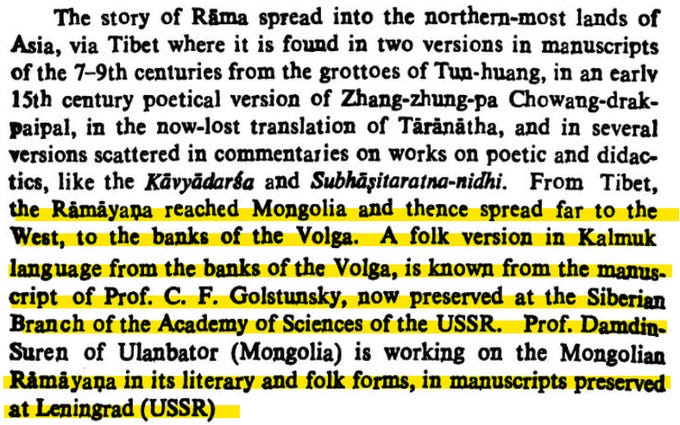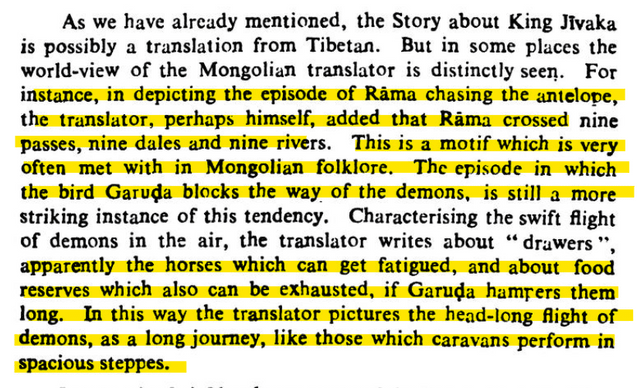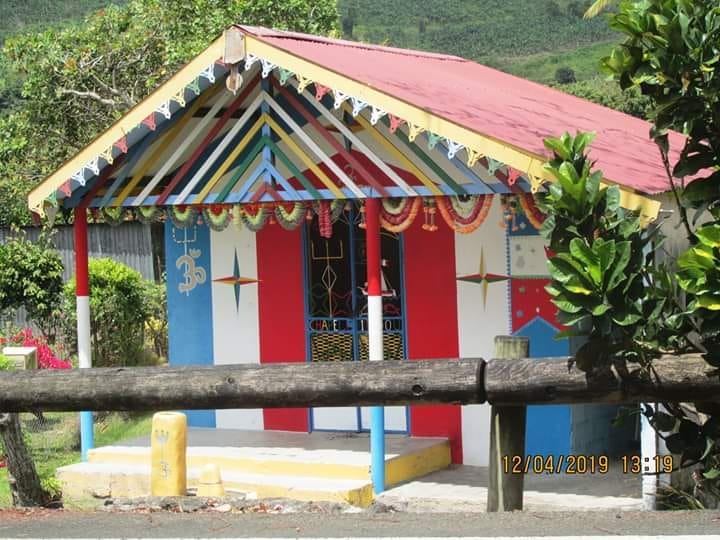Week 162: Mongol Ramayanas, an Afghan Lord Ganesha murti, Martinique Temple
01/22/2023 - Modern Hindu Content
Welcome to Eternal Path! In this weeks issue, we feature: A look at the Ramayana among Mongol groups, a deep dive into the Gardez Ganesh, and a Hindu Temple in Martinique!
Text Highlight: Ramayana among Mongolic Groups
In our Week 80 Issue, we highlighted the Altai Hindus; as a refresher, that group of folks lives in Siberia within the Russian Federation and speak a Turkic language. Given Turkic groups and Mongols share many cultural characteristics and some history, we figured that was a good segue into this week’s feature on the Ramayana among Mongolic Buddhist communities in Russia and Mongolia.
Shailesh Bharadwaj recently posted a few snippets on the topic, available here.
The Kalmyk community is quite interesting as they are a Mongol Buddhist group inhabiting their own province in European Russia, making Kalmykia the only Buddhist majority state in Europe. The Ramayana was translated in to Kalmyk (a Mongolic language) by the late 1600s!
As mentioned in some of these snippets, it is likely that the Mongols and Kalmyks received their Ramayana from existing Tibetan versions; as Tibetan Buddhist monks and preachers have been part of their societies for centuries. However, MT, a prominent Hinduism expert, suggests the source may have been an itinerant North Indian Brahmin priest named as “Zaya Pandita”; snippet provided below, with a full link to his article at: https://manasataramgini.wordpress.com/2006/12/13/mongolian-ramayana/
Diaspora Highlight: Gardez Ganesha
The Gardez Ganesha, shown below, is a murti of Lord Ganesha likely consecrated in Gardez, part of Paktia province in modern-day Afghanistan. We featured it as an aesthetic in Week 42, but we’re diving in deeper this time. It was conseccrated by a King named Khingala, who interestingly was part of the Turk Shahi dynasty. The Turk Shahis ultimately were defeated by early Muslim caliphates, and succeeded in Afghanistan by the Hindu Shahis (who we covered in Week 71 and Week 26).


Below the murti is a dedication, written in the Siddhamatrika script (a descendant of the Brahmi script, ancestor to nearly all Indic and many Southeast Asian scripts).







